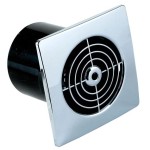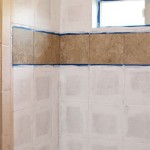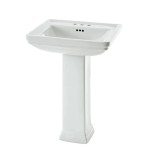Bathroom Sink Drain Plug Won't Come Out: Troubleshooting and Solutions
A stuck drain plug in a bathroom sink is a common household plumbing issue. It can range from a minor inconvenience to a significant problem, especially if the sink needs to be used or repaired. Understanding the potential causes and implementing effective solutions is crucial to resolving this issue without causing further damage to the sink or plumbing system. This article will explore the reasons behind a stuck sink drain plug and provide a step-by-step guide to releasing it.
The typical pop-up drain mechanism consists of several interconnected parts. The drain plug itself, often made of metal or plastic, sits inside the drain opening. Connected to the plug is a vertical rod that extends downward. This rod connects to a horizontal pivot rod. The pivot rod is operated by a lift rod or lever located near the faucet. When the lift rod is raised or lowered, it rotates the pivot rod, which in turn moves the vertical rod and, consequently, raises or lowers the drain plug. This system, while relatively simple in design, is susceptible to various issues that can cause the drain plug to become stuck.
Understanding the Common Causes of a Stuck Drain Plug
Several factors can contribute to a bathroom sink drain plug becoming stuck. Identifying the root cause is essential for selecting the appropriate solution. Ignoring the underlying problem can lead to recurring issues or even damage to the drain mechanism.
One of the most prevalent causes is the accumulation of hair, soap scum, and other debris within the drain assembly. These materials can intertwine and solidify, forming a clog that physically obstructs the movement of the drain plug and its connected rods. Over time, this buildup can harden and become extremely difficult to remove. Mineral deposits from hard water can also contribute to this problem, further cementing the debris in place.
Another common reason for a stuck drain plug is corrosion. Metal components within the drain assembly, particularly the pivot rod and the vertical rod, are susceptible to corrosion, especially in environments with high humidity or frequent exposure to water. Corrosion can cause these parts to seize, preventing the drain plug from moving freely. The internal surfaces of the drain pipe itself can also corrode, adding to the obstruction.
Physical obstructions, such as small objects accidentally dropped into the drain, can also cause the drain plug to become stuck. Jewelry, small toys, or even pieces of broken glass can lodge themselves within the drain assembly, preventing the proper movement of the plug. These objects can wedge themselves tightly, requiring significant effort to dislodge.
Finally, improper installation or damage to the drain assembly can also lead to a stuck drain plug. If the drain assembly was not installed correctly, the various components may not align properly, causing friction and hindering the movement of the drain plug. Similarly, if any of the components are bent, broken, or otherwise damaged, the drain plug may become stuck due to the mechanical malfunction of the system.
Step-by-Step Troubleshooting Techniques
When faced with a stuck bathroom sink drain plug, a systematic approach to troubleshooting is recommended. Starting with the simplest solutions and progressing to more involved methods can often resolve the issue without requiring professional assistance. Safety precautions should be taken throughout the process, including wearing gloves and eye protection.
The first step is to visually inspect the drain plug and the surrounding area. Look for any obvious obstructions, such as hair or debris, that may be preventing the plug from moving. Use a small tool, such as a bent wire or a pair of tweezers, to carefully remove any visible obstructions. Avoid forcing the plug, as this can cause further damage.
Next, examine the lift rod mechanism. Ensure that the lift rod is properly connected to the pivot rod. Sometimes, the lift rod can become detached or misaligned, preventing it from properly actuating the drain plug. If the lift rod is loose, tighten the screw that secures it to the pivot rod. If the lift rod is bent or damaged, it may need to be replaced.
If the lift rod mechanism appears to be working correctly, the next step is to try manually manipulating the pivot rod. Locate the pivot rod underneath the sink. Gently try to rotate the pivot rod back and forth. This may help to loosen any debris or corrosion that is causing it to stick. If the pivot rod is difficult to move, apply a penetrating lubricant, such as WD-40, to the pivot rod and the surrounding area. Allow the lubricant to soak in for several minutes before attempting to move the pivot rod again.
If manually manipulating the pivot rod does not release the drain plug, the next step is to attempt to remove the drain plug. In many cases, the drain plug can be removed by simply pulling it straight up. However, if the plug is tightly stuck, prying it out with a screwdriver may be necessary. Be careful not to scratch or damage the sink basin while prying. If the drain plug has a decorative cap, it may need to be unscrewed or pried off before the plug can be removed.
Once the drain plug is removed, thoroughly inspect the drain opening and the drain plug itself for any remaining debris or corrosion. Clean the drain plug and the drain opening with a brush or a cloth. If necessary, use a drain cleaner to dissolve any stubborn clogs. Be sure to follow the instructions on the drain cleaner carefully, and avoid using excessive amounts, as this can damage the plumbing.
Advanced Solutions When Simple Methods Fail
In some instances, the initial troubleshooting steps may not suffice to release the stuck drain plug. When this occurs, more advanced techniques may be necessary. These methods often involve disassembling parts of the drain assembly to gain better access to the obstruction or to address corrosion more effectively.
One advanced solution is to remove the pivot rod. This will allow access to the drain opening and the vertical rod connected to the drain plug. To remove the pivot rod, first locate the nut that secures it to the drainpipe. Loosen the nut with a wrench, and then carefully pull the pivot rod out of the drainpipe. Be prepared for some water to drain out when the pivot rod is removed. Once the pivot rod is removed, the vertical rod can be manipulated more freely, potentially dislodging the drain plug.
Another advanced technique is to use a plumbing snake. A plumbing snake is a flexible tool that can be inserted into the drainpipe to break up clogs and retrieve obstructions. Insert the plumbing snake into the drain opening and carefully push it down the drainpipe. Rotate the snake as it moves through the pipe to help break up any debris. If the snake encounters an obstruction, try to hook onto it and pull it out. Be careful not to force the snake, as this can damage the drainpipe.
If corrosion is suspected to be the primary cause of the stuck drain plug, a more aggressive approach to cleaning may be necessary. Use a wire brush to scrub away any visible corrosion from the drain plug, the vertical rod, and the pivot rod. Soak the corroded parts in a vinegar solution for several hours to help dissolve the corrosion. After soaking, scrub the parts again with a wire brush. If the corrosion is severe, the affected parts may need to be replaced.
In cases where physical obstructions are deeply lodged within the drainpipe, professional assistance from a plumber may be required. Plumbers have specialized tools and expertise to safely remove stubborn obstructions without causing damage to the plumbing system. Attempting to remove deeply lodged obstructions without the proper tools or knowledge can result in further damage and costly repairs.
Preventive maintenance is crucial to avoid future incidents of a stuck drain plug. Regularly cleaning the drain plug and the drain opening will help prevent the buildup of hair, soap scum, and other debris. Periodically flushing the drain with hot water and a small amount of dish soap can also help to keep the drain clear. Avoid dropping small objects into the drain. If hard water is a problem, consider installing a water softener to reduce the buildup of mineral deposits. By implementing these preventive measures, the likelihood of encountering a stuck drain plug can be significantly reduced.
How To Get A Bathroom Sink Plug Removed When It Won T Un Quora
I Closed My Sink Drain Stopper And Now It Won T Open Again Is There Any Way That Can Repair This Without Hiring A Plumber Quora

How To Fix A Bathtub Or Sink Pop Up Stopper

How To Replace A Sink Stopper Quick And Simple Home Repair

How To Replace Or Maintain A Sink Pop Up Drain Assembly

How To Fix Drain Plug That Won T Open Empty A Basin Of Water

How To Fix Pop Up Drain Waste Plug

My Pop Up Drain Is Not Draining Water
How To Get A Bathroom Sink Plug Removed When It Won T Un Quora

How To Remove A Sink Stopper The Home Depot
Related Posts







